News
TIFF Interview: Neasa Hardiman on ‘Sea Fever’, Inspiration, and Superstition
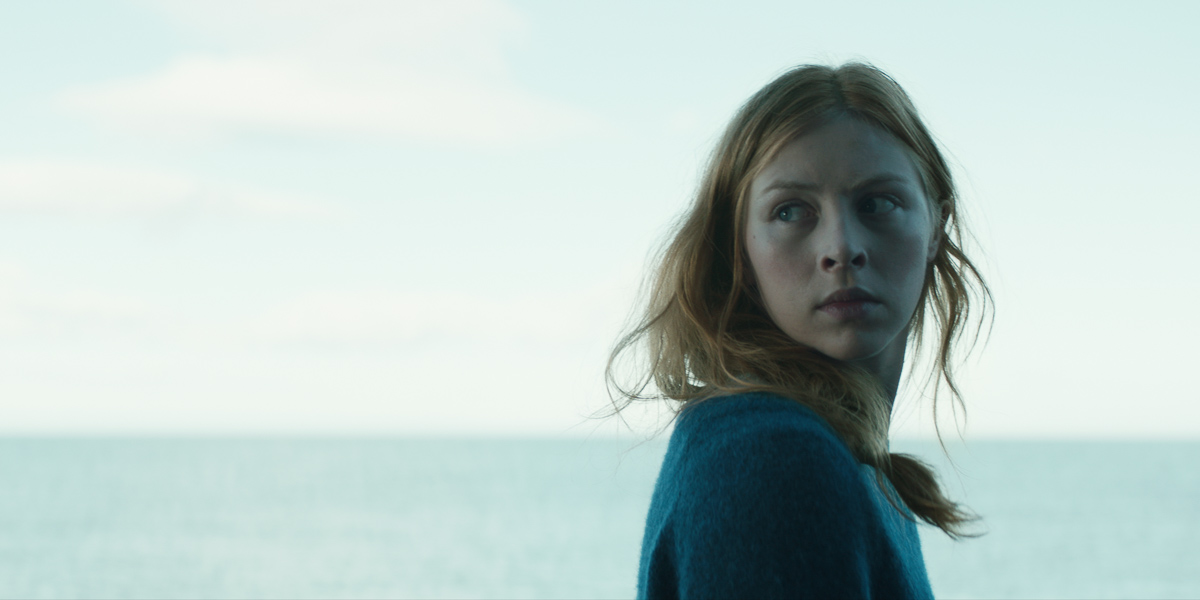
Sea Fever — which played at the Toronto International Film Festival as part of their Discovery program — is a captivating exploration of the horrific unknown of our natural world. Both beautiful and terrifying, think The Thing at sea; otherworldly entities and a seeping paranoia flow through Sea Fever in waves, knocking the film’s characters around as they try to keep their heads above water.
Writer/director Neasa Hardiman has won several awards for her documentary and television work. She’s brought her realist sensibilities to Sea Fever, crafting a heartfelt and genuine film with a heavy dose of dread. I had the opportunity to speak with Hardiman about inspiration, superstition, Irish horror, and women in film.
Kelly McNeely: What was the genesis of Sea Fever? Where did this idea come from?
Neasa Hardiman: I think one of the things that I wanted to do, was I wanted to tell a story that was contained, that allowed the exploration of character and that had a propulsive narrative drive that would keep you leaning forward in your seat. So that was really important to me.
I wanted to tell a story about a scientist, where a scientist was the lead. I think that was also really important. Because I feel like the scientist is usually kind of off to the side and a little bit amoral, and often if not quite a figure of fun, a figure of unease. So I wanted to place that figure front and center, and go, let’s just unearth what that is and where that weird cultural trope came from.
KM: I love that with the scientist in the forefront, because instead of it being a militarized “let’s kill this thing,” she very much wants to study it and keep it alive and protect it, which I think is an absolutely gorgeous idea.
NH: Oh brilliant! It’s that third act thing, right? The expected third act in a film like this becomes “chase-fight-chase-fight-confrontation-death” [laughs]. And it was something I was really aware of. I remember seeing David Hare — the screenwriter — and he said essentially a feature film is three stories. You’ve got a story in the first act that turns left, and you get a completely different story in the second act, and then there’s a second left turn and you get a third story in the third act. He said most films only have two stories because it’s really hard [laughs].
I thought, ok, well I’m really gonna take that to heart and we’re not going to do chase-fight-chase-fight, we’re going to make the third act about something else, and it’s got to be about taking responsibility, it’s got to be about that kind of broader theme of the story.
So the third act has to be about taking responsibility for this animal that has accidentally arrived in this space; it doesn’t want to be there, they don’t want it to be there, and they’ve got to get it out. And so there’s taking responsibility for that. And then obviously at the very end of the story it’s also about taking responsibility for what’s happened to Siobhan, and she has to do the moral thing at the end.

Sea Fever via TIFF
KM: I do love the ending, too. Usually it’s not the female character that gets to have those wonderful moments, usually it’s the male character, like “Oh, I’m going to save the day”. So I love that she’s able to step in in a really beautiful and organic and healthy way. I think that’s really lovely.
NH: Good! [laughs]
KM: There’s some really spectacular gore in there as well, some wonderful body horror. Did you use practical effects for that or was it mostly CGI?
NH: A lot of it is CG, and we did have some really brilliant puppeteers so there’s a shot in the sink where there are little animals crawling around in the sink, and that’s all live on the day made of seaweed with little bits of iron filings in them and a puppeteer underneath the sink with a magnet [laughs]. So that was really fun. And the puppeteers also made the sea creatures, those tendrils. And we had terrific CG designs as well; Alex Hansson generated all the big, beautiful, mesmeric images.
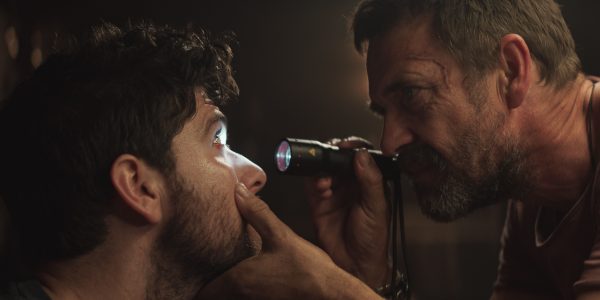
Sea Fever via TIFF
KM: There are some big themes in Sea Fever with family, nature, sacrifice, nautical superstitions… what do themes mean to you, and what did you want to bring out in the film with those themes?
NH: Really what was interesting to me was when I was kinda teasing out where do I want the story to go, how do I want it to live, was this notion of the scientific method and being really rational. And I thought ok, if you push that to an extreme, what’s the real extreme of that? And the real extreme of that is a lack of social connection.
That there’s a degree to which magical thinking allows me to pretend that I understand what you’re thinking, and you pretend you understand what I think, and we make a connection that way, and actually that’s valuable. There’s a warmth in that that allows us to feel good about one another. So I was kind of researching into that, and researching into cognitive styles, and what are the difficulties and advantages of different cognitive styles.
I thought if that’s one end, where you acknowledge that part of the scientific method allows you to be really humble about your place in the world, and to acknowledge that there’s very little that you can influence, but you can observe and try to understand. And then what’s the other extreme?
The other extreme is superstition. Like I knock on the table and that means that the bad luck that I’ve thought about won’t happen. So there’s this illusion of control, this illusion that you control everything. I thought there are two extremes that we can explore through the story, and this notion of the advantage of being very clear about the minimal input of your place in the universe and the scientific method and humility and clarity, could also leave you quite isolated, and that’s very painful. Versus reading meaning into absolutely everything and thinking that, you know, entrails are going to tell you what the weather is going to be like. Which is very connecting, but it doesn’t really help you in the world.
And the interesting thing that I discovered — and it’s kind of a banal thing to say — but the less control that you have over your life, the more likely you are to turn to magical thinking to give you the illusion of control. And there’s nothing wrong with that! That leap of faith which is a non-rational, non-logical form of thinking can be really valuable and enriching and nourishing, and there’s nothing wrong with that. And it does unify us. As a community and a species, we need that. We need to feel unified and we need ritual and we need community and shared beliefs in order to be happy and healthy.
So it was sort of looking at those extremes and allowing our central character who sort of starts at one end. But she’s in pain at the beginning of the story. She’s trying, but she’s just a little bit socially deaf and it’s very hard for her. And to allow her to move into a community space where she’s sharing the ritual of food and sharing that connection with people before, of course, you know, it falls apart. But she does have a rich and authentic connection as [Sea Fever] develops, while at the same time allowing the strengths of her cognitive style to drive the rest of the story.

Sea Fever via TIFF
KM: I’ve noticed that — in a lot of Irish horror — there’s a big theme of nature, and that natural theme is stunning. Is horror a big thing the way it is in America, or is genre not quite as big in Ireland?
NH: That’s a really interesting question. I’d be reluctant to generalize because I feel like every filmmaker is different, and it’s very hard to see from inside your own culture what’s going on. It’s much easier to look at it from the outside and see those motifs come up again and again.
The biggest city in Ireland only has 1.5 million people, so we don’t have a huge industrialized landscape, and agrarian culture has been a big feature of Irish life. And I think it’s quite a clannish community in Ireland; we’re very family-orientated and social connection is very important to us, and rootedness is very important to us.
There’s a rich seam of traditional mythology in Ireland and storytelling, and a lot of it is quite gothic [laughs]. The stories tend to be quite dark! As they are, I suppose, across the world when it comes to folkloric storytelling. They are those dream metaphors — don’t go into the woods at night! So I do think that informs the Irish imagination.
If you look at Irish filmmakers down the years, there often is that quite gothic sensibility at work. You look at Neil Jordan, it’s like, Jesus there’s a gothic one [laughs]. The Lodgers — that screened [at TIFF] two years ago — has that same kind of gothic sensibility. The Winter Lake has that same gothic sensibility. So, yeah… I think you’re onto something [laughs].
KM: What advice would you give to aspiring female filmmakers?
NH: I would say three things. I would say don’t ask for permission, just do it. Speak your mind. And if you’re not happy, say so.
I think it is hard, still. I’ve been working for 20 years in high-end television, and still many times when I walk on set, I am the first female director that any of the crew has worked with. It’s still weird.
There are many, many, many women in film, and there are many, many really talented women in film. And there are many famous, brilliant, super successful women in film. But statistically, there is a glass ceiling. There is a glass ceiling where there are loads of women working at a certain level, and once the budgets go up, the number of women goes down. And that’s unconscious bias. So the question is how do we overcome unconscious bias?
The truth is, it’s not just our problem. We can’t solve this on our own, we need everybody to solve this problem. It’s not an unsolvable problem — it’s a pretty easy problem to solve [laughs]. And I think the thing that we can do is just keep working, keep working. Don’t ask for permission. If people critique you, of course take it on board, consider it, absorb it, accept the critique, and keep working.
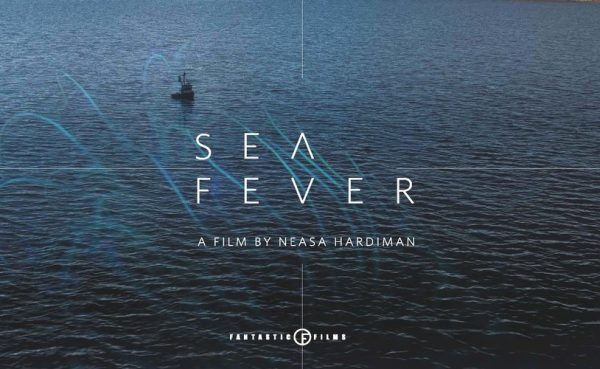
via IMDb
KM: What were your inspirations for Sea Fever, and what are you influenced by when you make a film?
NH: That’s a great question. I think loads and loads of really diverse things. I think the broader your cultural palette as a filmmaker — as a creator, generally, I’m sure you agree — the broader the better, because you never know what’s going to tickle you, or you never know when you’re working on a story problem what’s going to come from the back of your head.
It’s going to be an interview you read, or a novel that you’ve read, or something from somewhere completely different that you go, that’s really truthful and I never thought of it like that before, but that feels really authentic and human to me and I can use that experience or dramatic moment — or whatever. So I think it’s really important to stay broad and to stay interested in everything.
For this, I think that the films that influenced me most were probably films like Arrival, Annihilation, Alien, obviously… all the A films [laughs]. It’s that really nice sweet spot between rich, authentic, truthful, conflicted, layered characterization that feels grounded and real, and a dreamlike element that you bring in and go, what if. What if this. But not letting that dreamlike element take over, so not letting it become kind of just crash-bang-whollop and a series of visual effects, but rather just introducing it like dropping a stone into water so that all the ripples are the things that you’re watching. So that was sort of the idea.
For more from TIFF 2019, click here for reviews, interviews, and more!
Listen to the 'Eye On Horror Podcast'

Movie Reviews
Panic Fest 2024 Review: ‘The Ceremony Is About To Begin’
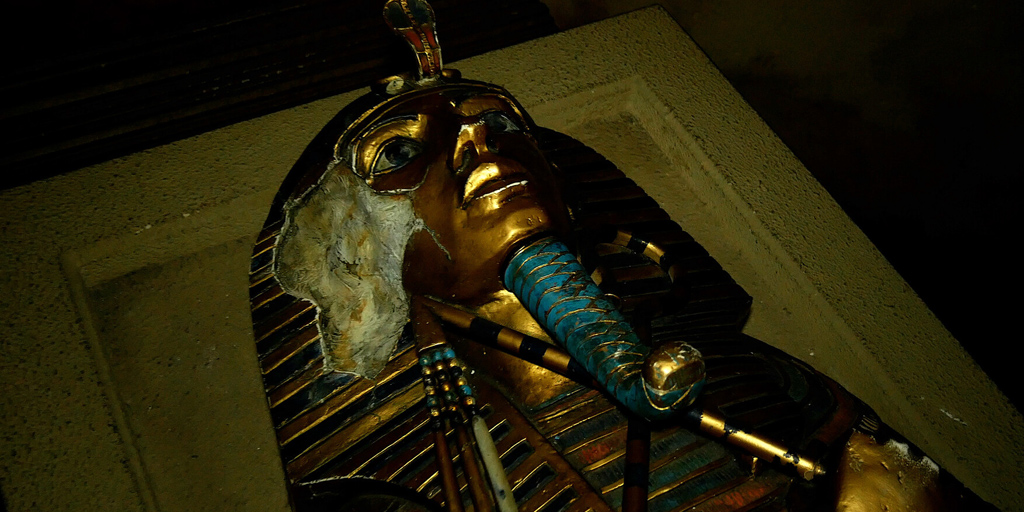
People will look for answers and belonging in the darkest places and the darkest people. The Osiris Collective is a commune predicated upon ancient Egyptian theology and was run by the mysterious Father Osiris. The group boasted dozens of members, each forgoing their old lives for one held in the Egyptian themed land owned by Osiris in Northern California. But the good times take a turn for the worst when in 2018, an upstart member of the collective named Anubis (Chad Westbrook Hinds) reports Osiris disappearing while mountain climbing and declaring himself the new leader. A schism ensued with many members leaving the cult under Anubis’ unhinged leadership. A documentary is being made by a young man named Keith (John Laird) whose fixation with The Osiris Collective stems from his girlfriend Maddy leaving him for the group several years ago. When Keith gets invited to document the commune by Anubis himself, he decides to investigate, only to get wrapped up in horrors he couldn’t even imagine…

The Ceremony Is About To Begin is the latest genre twisting horror film from Red Snow‘s Sean Nichols Lynch. This time tackling cultist horror along with a mockumentary style and the Egyptian mythology theme for the cherry on top. I was a big fan of Red Snow‘s subversiveness of the vampire romance sub-genre and was excited to see what this take would bring. While the movie has some interesting ideas and a decent tension between the meek Keith and the erratic Anubis, it just doesn’t exactly thread everything together in a succinct fashion.
The story begins with a true crime documentary style interviewing former members of The Osiris Collective and sets-up what led the cult to where it is now. This aspect of the storyline, especially Keith’s own personal interest in the cult, made it an interesting plotline. But aside from some clips later on, it doesn’t play as much a factor. The focus is largely on the dynamic between Anubis and Keith, which is toxic to put it lightly. Interestingly, Chad Westbrook Hinds and John Lairds are both credited as writers on The Ceremony Is About To Begin and definitely feel like they’re putting their all into these characters. Anubis is the very definition of a cult leader. Charismatic, philosophical, whimsical, and threateningly dangerous at the drop of a hat.
Yet strangely, the commune is deserted of all cult members. Creating a ghost town that only amps up the danger as Keith documents Anubis’ alleged utopia. A lot of the back and forth between them drags at times as they struggle for control and Anubis keeps continuing to convince Keith to stick around despite the threatening situation. This does lead to a pretty fun and bloody finale that fully leans into mummy horror.
Overall, despite meandering and having a bit of a slow pace, The ceremony Is About To Begin is a fairly entertaining cult, found footage, and mummy horror hybrid. If you want mummies, it delivers on mummies!

Listen to the 'Eye On Horror Podcast'
News
“Mickey Vs. Winnie”: Iconic Childhood Characters Collide in A Terrifying Versus Slasher

iHorror is diving deep into film production with a chilling new project that’s sure to redefine your childhood memories. We’re thrilled to introduce ‘Mickey vs. Winnie,’ a groundbreaking horror slasher directed by Glenn Douglas Packard. This isn’t just any horror slasher; it’s a visceral showdown between twisted versions of childhood favorites Mickey Mouse and Winnie-the-Pooh. ‘Mickey vs. Winnie’ brings together the now-public-domain characters from A. A. Milne’s ‘Winnie-the-Pooh’ books and Mickey Mouse from the 1920s ‘Steamboat Willie’ cartoon in a VS battle like never before seen.
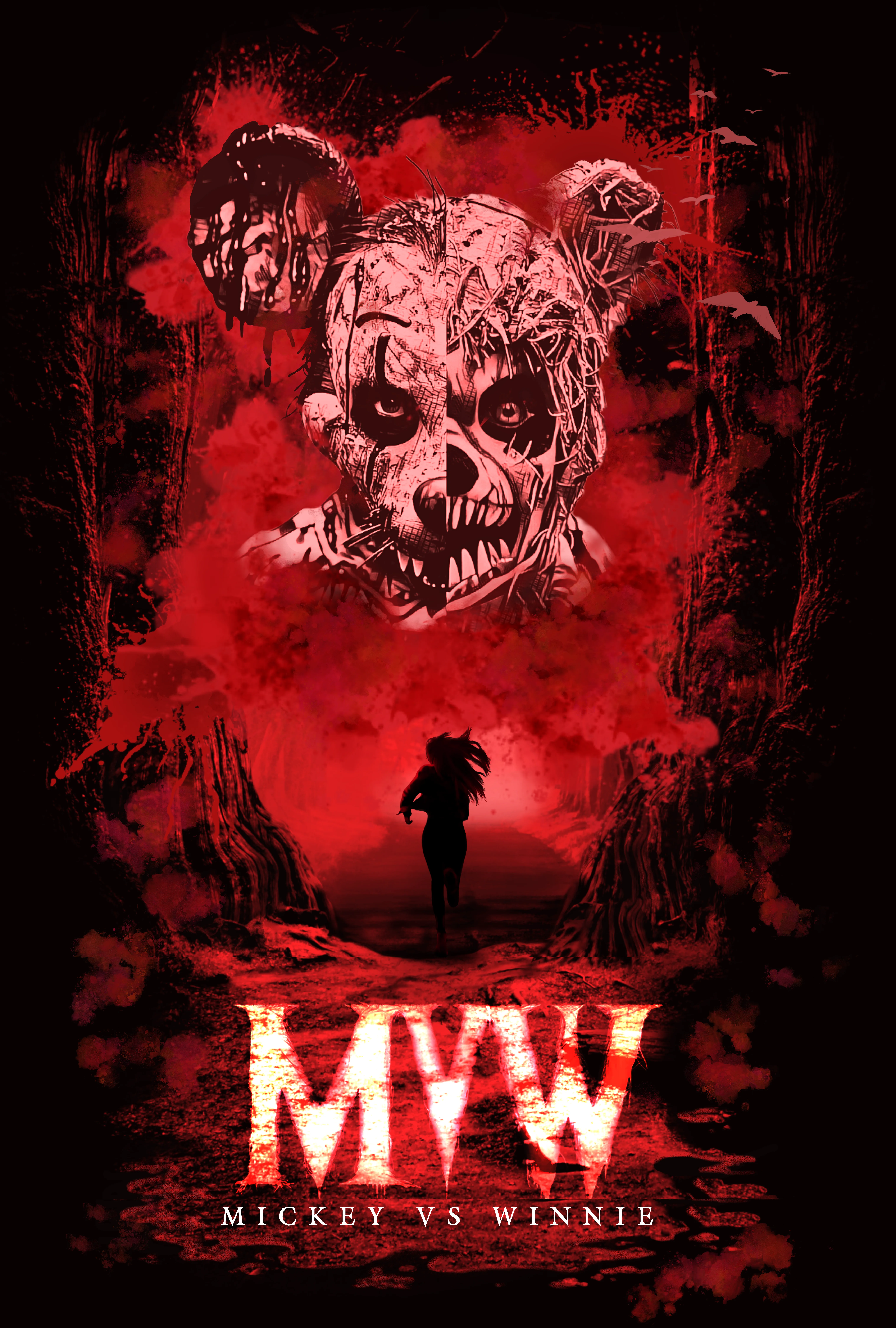
Set in the 1920s, the plot kicks off with a disturbing narrative about two convicts who escape into a cursed forest, only to be swallowed by its dark essence. Fast forward a hundred years, and the story picks up with a group of thrill-seeking friends whose nature getaway goes horribly wrong. They accidentally venture into the same cursed woods, finding themselves face-to-face with the now monstrous versions of Mickey and Winnie. What follows is a night filled with terror, as these beloved characters mutate into horrifying adversaries, unleashing a frenzy of violence and bloodshed.
Glenn Douglas Packard, an Emmy-nominated choreographer turned filmmaker known for his work on “Pitchfork,” brings a unique creative vision to this film. Packard describes “Mickey vs. Winnie” as a tribute to horror fans’ love for iconic crossovers, which often remain just a fantasy due to licensing restrictions. “Our film celebrates the thrill of combining legendary characters in unexpected ways, serving up a nightmarish yet exhilarating cinematic experience,” says Packard.
Produced by Packard and his creative partner Rachel Carter under the Untouchables Entertainment banner, and our very own Anthony Pernicka, founder of iHorror, “Mickey vs. Winnie” promises to deliver an entirely new take on these iconic figures. “Forget what you know about Mickey and Winnie,” Pernicka enthuses. “Our film portrays these characters not as mere masked figures but as transformed, live-action horrors that merge innocence with malevolence. The intense scenes crafted for this movie will change how you see these characters forever.”
Currently underway in Michigan, the production of “Mickey vs. Winnie” is a testament to pushing boundaries, which horror loves to do. As iHorror ventures into producing our own films, we’re excited to share this thrilling, terrifying journey with you, our loyal audience. Stay tuned for more updates as we continue to transform the familiar into the frightful in ways you’ve never imagined.
Listen to the 'Eye On Horror Podcast'
Movies
Mike Flanagan Comes Aboard To Assist in Completion of ‘Shelby Oaks’

If you have been following Chris Stuckmann on YouTube you are aware of the struggles he has had getting his horror movie Shelby Oaks finished. But there’s good news about the project today. Director Mike Flanagan (Ouija: Origin Of Evil, Doctor Sleep and The Haunting) is backing the film as a co-executive producer which might bring it much closer to being released. Flanagan is a part of the collective Intrepid Pictures which also includes Trevor Macy and Melinda Nishioka.
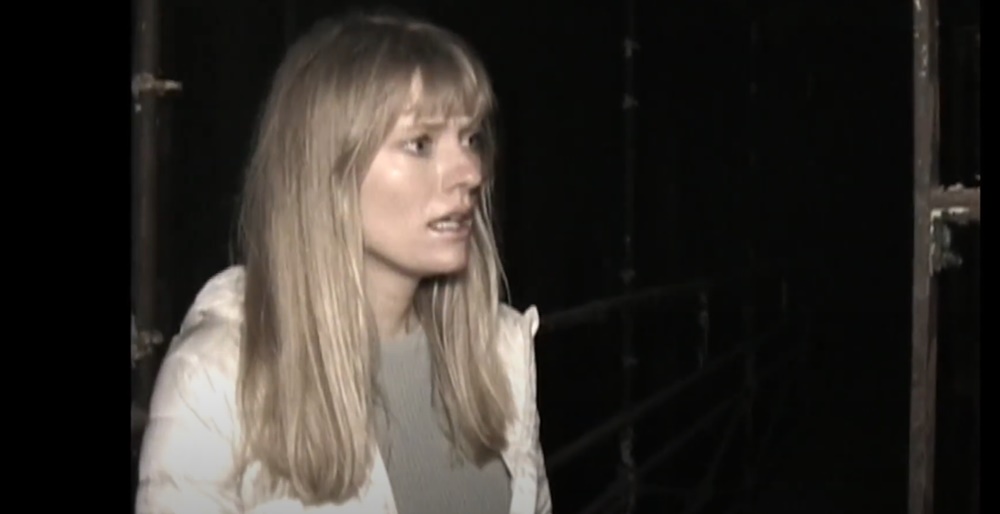
Stuckmann is a YouTube movie critic who’s been on the platform for over a decade. He came under some scrutiny for announcing on his channel two years ago that he would no longer be reviewing films negatively. However contrary to that statement, he did a non-review essay of the panned Madame Web recently saying, that studios strong-arm directors to make films just for the sake of keeping failing franchises alive. It seemed like a critique disguised as a discussion video.
But Stuckmann has his own movie to worry about. In one of Kickstarter’s most successful campaigns, he managed to raise over $1 million for his debut feature film Shelby Oaks which now sits in post-production.
Hopefully, with Flanagan and Intrepid’s help, the road to Shelby Oak’s completion is reaching its end.
“It’s been inspiring to watch Chris working toward his dreams over the past few years, and the tenacity and DIY spirit he displayed while bringing Shelby Oaks to life reminded me so much of my own journey over a decade ago,” Flanagan told Deadline. “It’s been an honor to walk a few steps with him on his path, and to offer support for Chris’ vision for his ambitious, unique movie. I can’t wait to see where he goes from here.”
Stuckmann says Intrepid Pictures has inspired him for years and, “it’s a dream come true to work with Mike and Trevor on my first feature.”
Producer Aaron B. Koontz of Paper Street Pictures has been working with Stuckmann since the beginning is also excited about the collaboration.
“For a film that had such a hard time getting going, it’s remarkable the doors that then opened to us,” said Koontz. “The success of our Kickstarter followed by the on-going leadership and guidance from Mike, Trevor, and Melinda is beyond anything I could have hoped for.”
Deadline describes the plot of Shelby Oaks as follows:
“A combination of documentary, found footage, and traditional film footage styles, Shelby Oaks centers on Mia’s (Camille Sullivan) frantic search for her sister, Riley, (Sarah Durn) who ominously disappeared in the last tape of her “Paranormal Paranoids” investigative series. As Mia’s obsession grows, she begins to suspect that the imaginary demon from Riley’s childhood may have been real.”
Listen to the 'Eye On Horror Podcast'
-
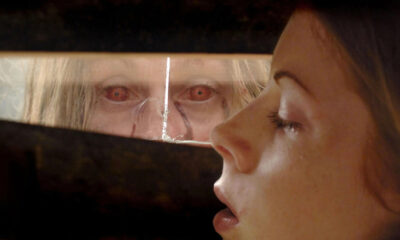
 Movies7 days ago
Movies7 days ago’28 Years Later’ Trilogy Taking Shape With Serious Star Power
-
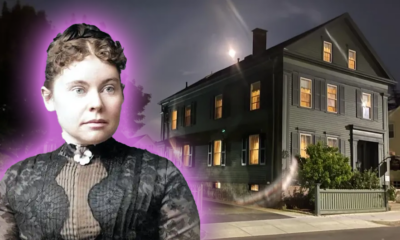
 News6 days ago
News6 days agoWin a Stay at The Lizzie Borden House From Spirit Halloween
-
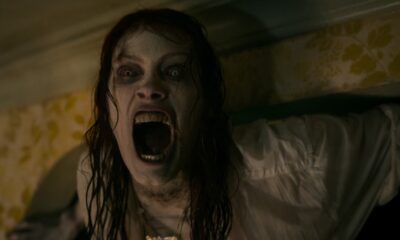
 Movies5 days ago
Movies5 days ago‘Evil Dead’ Film Franchise Getting TWO New Installments
-
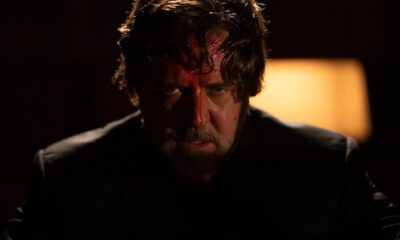
 Movies6 days ago
Movies6 days agoTrailer for ‘The Exorcism’ Has Russell Crowe Possessed
-
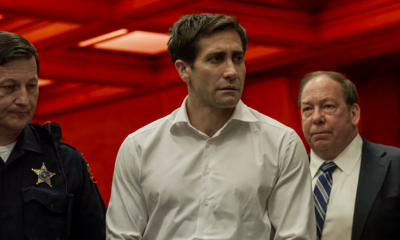
 News6 days ago
News6 days agoJake Gyllenhaal’s Thriller ‘Presumed Innocent’ Series Gets Early Release Date
-
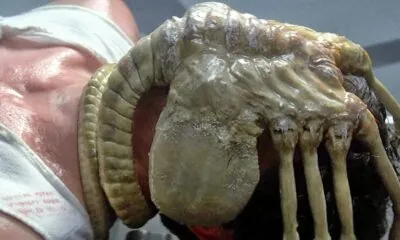
 Movies5 days ago
Movies5 days agoFede Alvarez Teases ‘Alien: Romulus’ With RC Facehugger
-
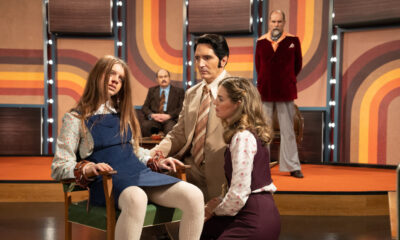
 Movies3 days ago
Movies3 days ago‘Late Night With the Devil’ Brings The Fire to Streaming
-
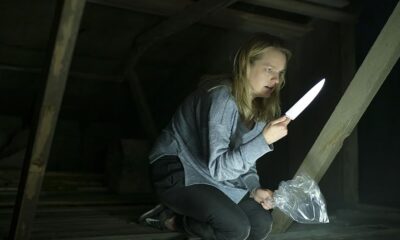
 Movies5 days ago
Movies5 days ago‘Invisible Man 2’ Is “Closer Than Its Ever Been” to Happening
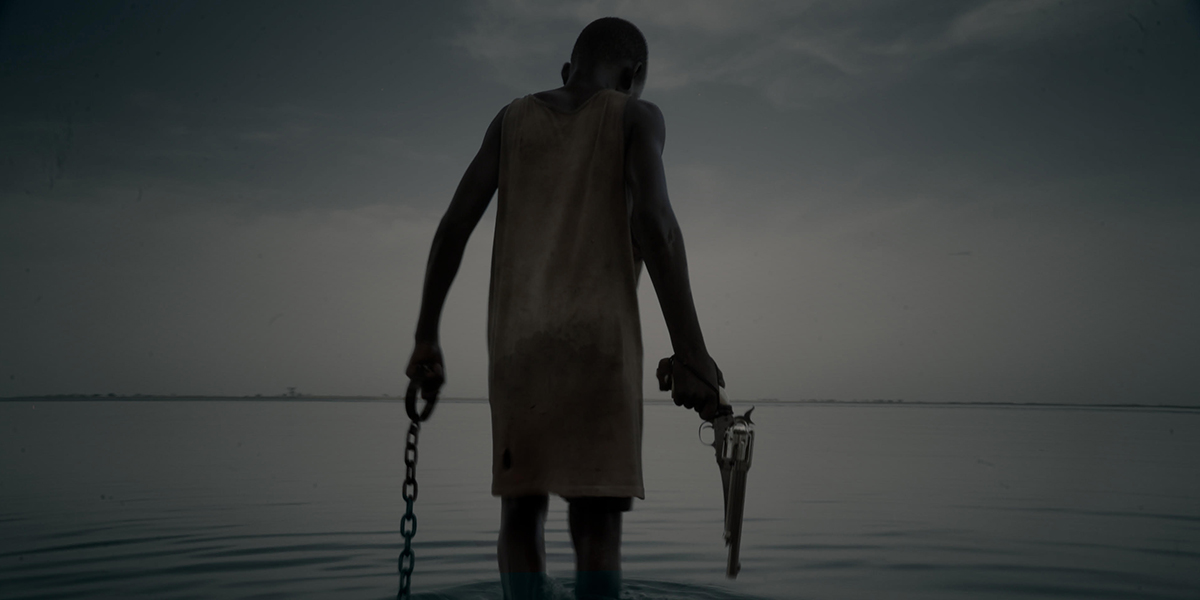
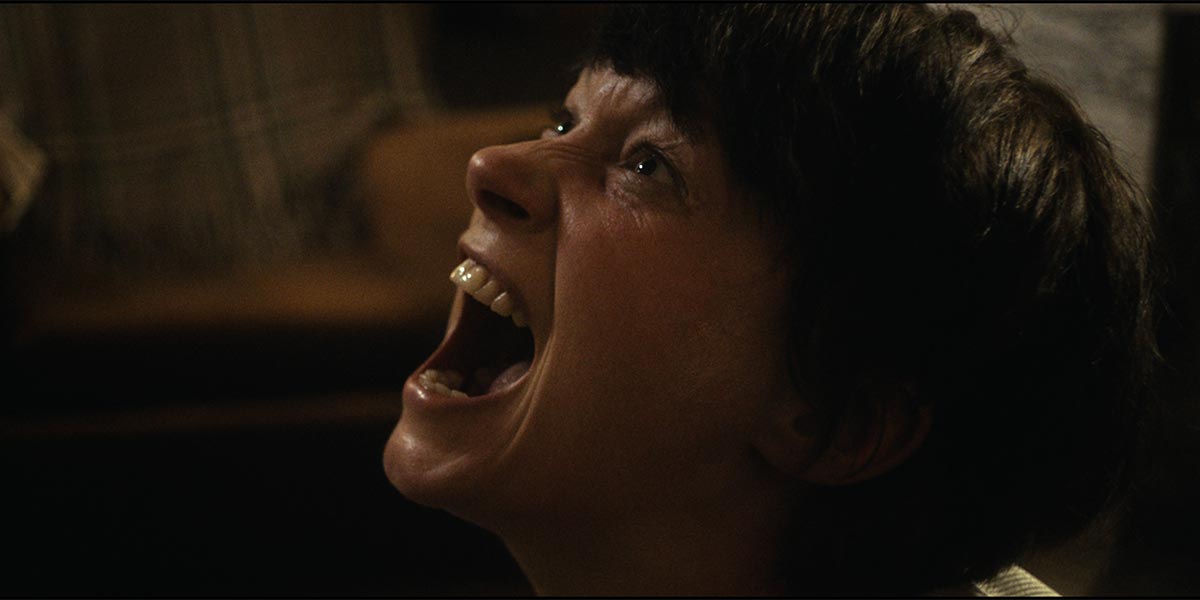
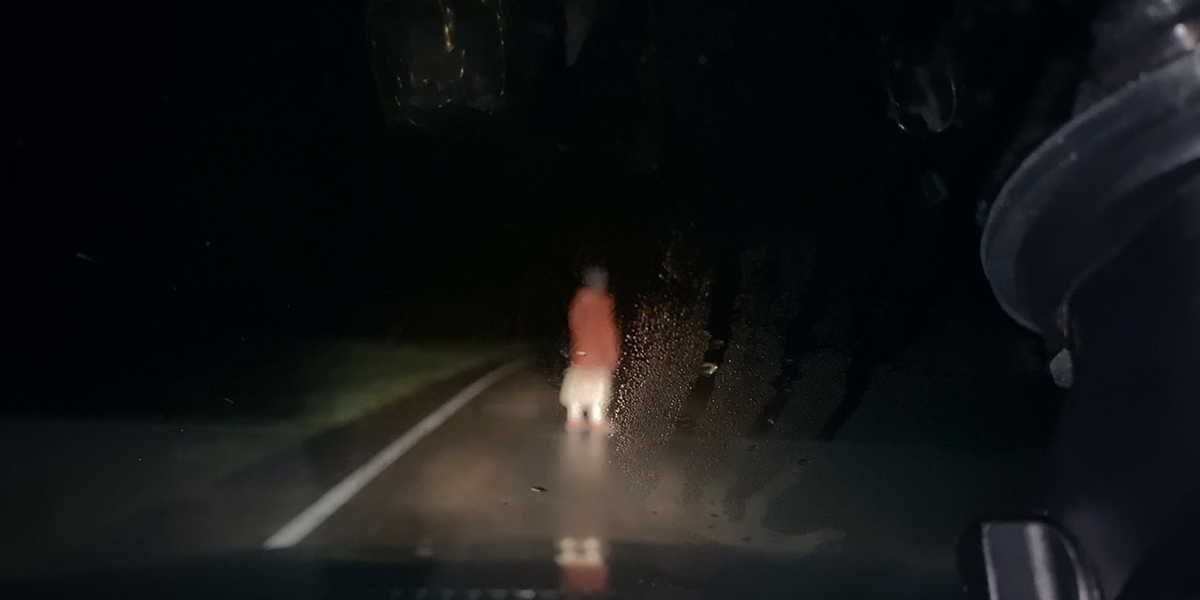













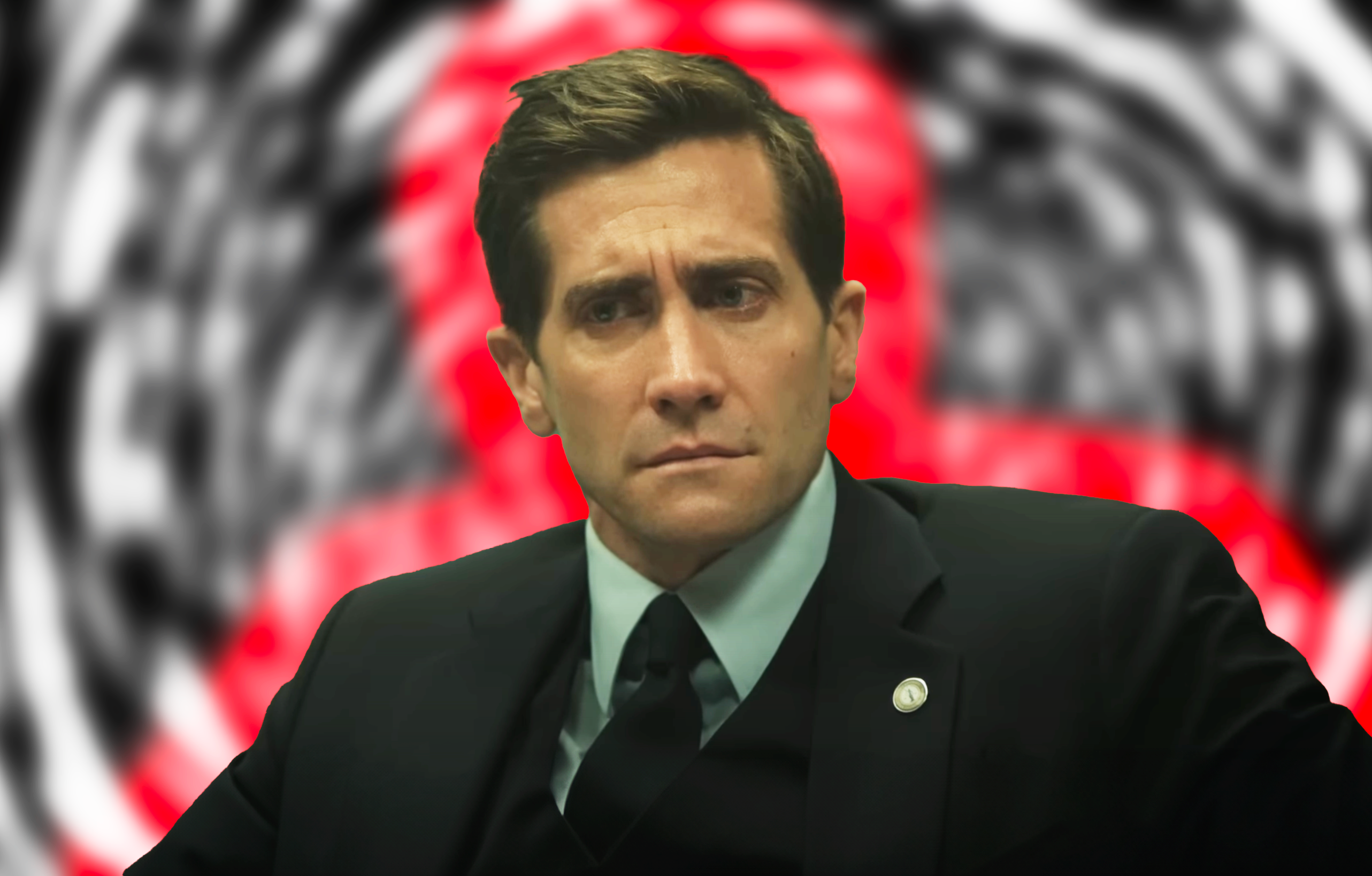







You must be logged in to post a comment Login